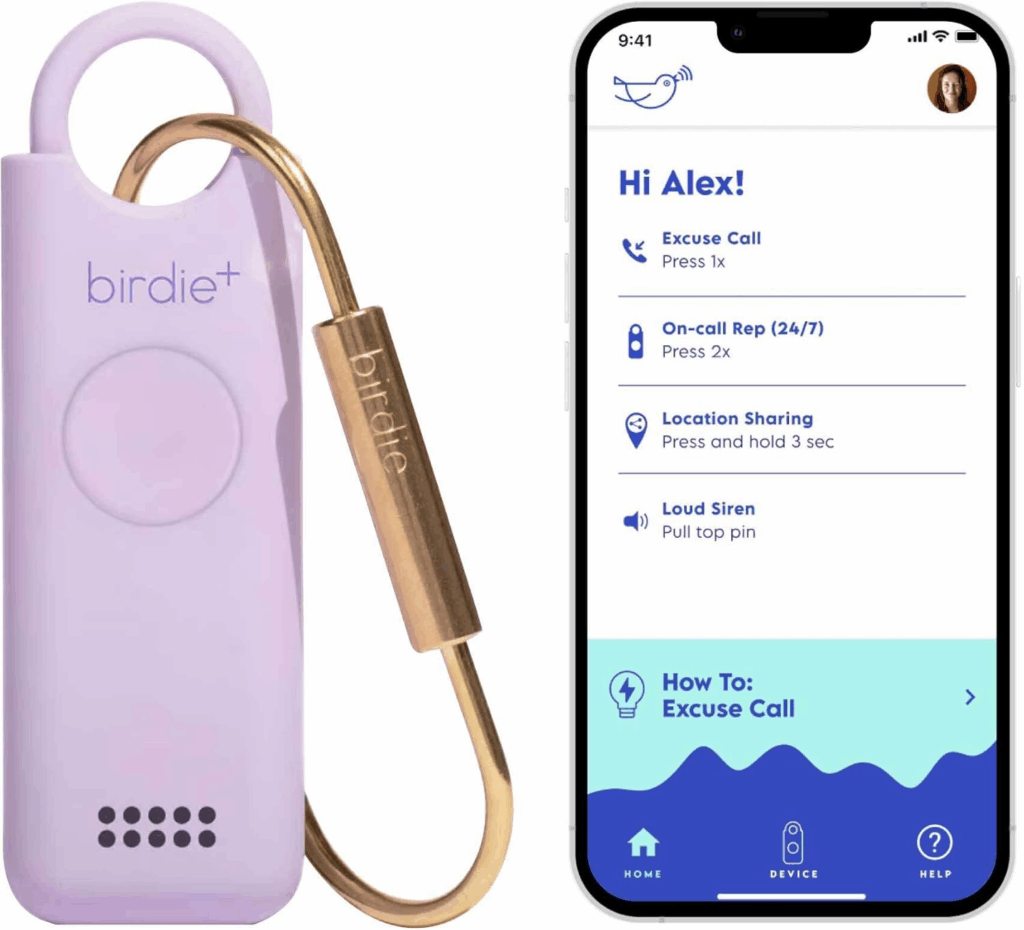That unsettling feeling, the prickle on your neck suggesting you’re being watched – it’s a common human intuition, and sometimes, it’s right. Recognizing if someone is intentionally following you is a crucial personal safety skill in today’s world. Ignoring persistent gut feelings or clear signs can potentially lead to dangerous situations. This guide provides practical knowledge based on established situational awareness principles to help you understand the challenges, detect suspicious behavior, employ smart tactics, and know exactly what steps to take if you confirm you are being tailed. Your safety matters, and awareness is the first step towards empowerment.
Understanding Why This Concern is Valid
It’s perfectly normal to seek information on this topic. Many individuals feel the need to be more prepared due to:
- Living, working, or traveling in areas perceived as having higher crime rates.
- Heightened feelings of anxiety or vulnerability in certain situations.
- Awareness raised by recent incidents reported in their community.
- Frequently traveling, commuting, or simply being out alone.
- A proactive desire for better personal safety preparedness and strong situational awareness.
The Difficulties in Detecting a Follower
Confirming if someone is following you isn’t always straightforward. Several factors can make detection challenging:
- Modern Distractions: Our focus is often split between phones, music, podcasts, or simply navigating, reducing awareness of our immediate surroundings.
- Environmental Factors: Crowded streets, complex layouts (like shopping malls), poor lighting, or noisy environments make tracking specific individuals difficult.
- Psychological Reactions: Genuine fear or panic can cloud judgment, leading to misinterpretation or difficulty thinking clearly. Conversely, it’s easy to dismiss valid concerns.
- Intentional Subtlety: Someone skilled at following will actively try to blend in, using plausible deniability for their movements.
- Self-Doubt: Many people second-guess their intuition, worrying about seeming paranoid or overreacting, which can delay necessary action.
How to Reliably Spot Someone Following You
Despite the challenges, specific observable patterns and tactics can help you determine if your concerns are justified. Focus on consistent behavior rather than isolated incidents.
Key Behavioral Clues to Watch For
- Repeated Presence: Seeing the same unfamiliar person multiple times across different locations or along various points of your journey when there’s no logical reason for them to be on the same path.
- Mirroring Your Actions: Observe if they consistently match your pace (speeding up when you do, slowing down abruptly if you pause) or mirror your route choices (making the same turns, crossing the street when you do).
- Appearing After Turns: Noticing the same individual appearing shortly after you’ve turned a corner or changed direction multiple times.
Practical Observation Tactics to Employ
- Systematically Vary Your Route: Make unexpected deviations. A classic test is making four consecutive right turns (or left turns) – essentially walking in a square. If someone is still behind you after completing the square, it’s highly probable they are following you intentionally. Other tactics include suddenly crossing the street or entering and quickly exiting a store. Observe their reaction – do they follow, hesitate, or seem flustered?
- Utilize Reflective Surfaces: Casually use shop windows, car side mirrors, darkened phone screens, or any reflective surface to check behind you without making it obvious you are looking back.
- Implement Strategic Pauses: Abruptly stop to tie your shoe, check your phone, or feign interest in a window display. See if the person behind you also stops awkwardly, tries to look busy suddenly, or changes direction unnaturally.
- Practice Subtle Scanning: Develop the habit of frequently and calmly scanning your surroundings (e.g., a 180-degree scan) when walking. Note who is around you without making direct, sustained eye contact initially.

Your Intuition Can Save Your Life — Learn to Trust It.
Discover why The Gift of Fear is a must-read for anyone serious about personal safety. Gavin de Becker reveals how listening to your gut can help you avoid danger before it happens.
👉 Get your copy now and start mastering the #1 self-defense skill: awareness.
Staying Aware and Gathering Information Discreetly
If you suspect you’re being followed but need more confirmation or want to subtly signal awareness, consider these strategies:
- Make Mental (or Digital) Notes: Discreetly log key details about the person’s appearance (clothing, build, height, hair, gait, any unique features like tattoos or bags) and their behavior. This information is vital if you need to report the incident. If safe, use a note app on your phone.
- Reference Landmarks: Mentally note when you pass a distinct landmark (e.g., a specific shop, statue, unusual building) and see if the suspected follower passes it shortly after, especially after you’ve varied your route.
- Project Confidence and Awareness: Walk with purpose, keep your head up, and make brief, deliberate eye contact with passersby. Looking like you are aware of your surroundings can act as a deterrent. Avoid looking lost or overly engrossed in your phone.
- Simulate a Revealing Phone Call: Pretend to call someone. Speak clearly, mentioning your exact current location, your destination, and your estimated time of arrival. Example: “Hi [Name], I’m just passing [Landmark/Street Corner] on [Street Name] now. Should be at [Destination] in about 5 minutes. See you inside.” This signals you are expected and your location is known.
- Casual Recording (Use Caution): If safe and legal in your area, pretend to take a selfie or video of something in front of you, angling the phone slightly to capture the person behind you in the background. This can potentially provide visual evidence later, but prioritize your immediate safety over getting footage.
Confirmed: Immediate Actions to Take If You Are Being Followed
If your observations confirm someone is intentionally following you, prioritize your safety above all else. Do not hesitate. Follow these steps immediately:
- DO NOT GO HOME: Absolutely avoid leading the follower to your residence or any place associated with you (like your workplace if it’s isolated). Do not drive into your garage or walk down your familiar street.
- Head Directly to a Safe, Populated Location: Go immediately to a place with people around. Good options include:
- A busy store or supermarket
- A cafe or restaurant
- A bank lobby (during business hours)
- A police station (ideal if nearby)
- A fire station
- Any well-lit area with foot traffic and potential witnesses.
- Call Emergency Services: Dial your local emergency number (e.g., 911, 999, 112).
- State your location clearly.
- Say explicitly, “I am being followed.”
- Provide a description of the person following you (using the details you noted).
- Follow the dispatcher’s instructions precisely. Stay on the line if possible and safe.
- Seek Help from Others: If you enter a business, immediately approach an employee, manager, or security guard. Calmly but clearly explain, “I am being followed, and I need help. Can you please call the police / Can I wait here safely?”
- Trust Your Instincts: Do not minimize the situation or worry about “making a scene.” Your intuition is a powerful safety tool. If you feel genuinely threatened, act on that feeling without delay. It is always better to err on the side of caution.

🚨 Stay Safe with Birdie
The Birdie Personal Safety Alarm unleashes a blaring 130dB siren and strobe light to scare off threats and attract attention fast. Lightweight and perfect for everyday carry.
👉 Click here to grab yours on Amazon
Building Ongoing Safety Habits
While knowing how to react is vital, incorporating these habits into your daily routine can reduce vulnerability:
- Cultivate Proactive Awareness: Aim for relaxed vigilance, not constant paranoia. Make scanning your surroundings a natural habit.
- Minimize Distractions: Be especially mindful of phone use when walking alone, particularly at night or in less familiar areas. If using headphones, keep the volume low or use only one earbud.
- Explore Safety Technology: Consider personal safety apps with features like location sharing with trusted contacts, panic buttons linked to emergency services, or GPS tracking devices.
- Invest in Training: Basic self-defense courses or workshops focusing specifically on situational awareness can provide valuable skills and boost confidence.
Conclusion: Empowerment Through Awareness
Recognizing the signs of being followed and knowing how to respond calmly and decisively transforms fear into empowerment. That gut feeling is often your mind processing subtle cues – learn to listen to it. By practicing observation skills, understanding potential threats, and having a clear plan of action, you significantly enhance your personal safety. Stay aware, trust your instincts, and never hesitate to prioritize your well-being.
Disclaimer: This article provides general information for educational purposes. It is not a substitute for professional security advice or law enforcement assistance in an active situation. Always prioritize your immediate safety and contact emergency services if you feel threatened.
Want a quick reference? Download our free printable checklist: “5 Steps to Take If You Think You’re Being Followed” .
Free Safety Guide
Download our guide: “5 Steps to Take If You’re Being Followed”
Download Free Guide
Affiliate Disclosure: This post may contain affiliate links. If you purchase through these links, I may earn a small commission at no extra cost to you. Recommendations are based on genuine belief in the product’s value.

